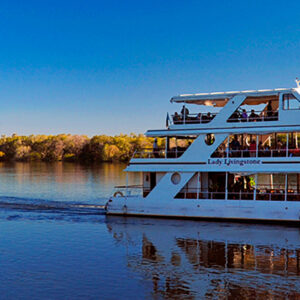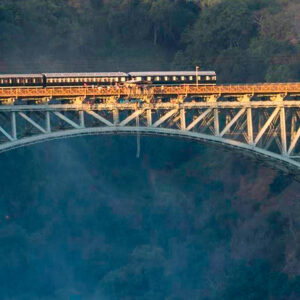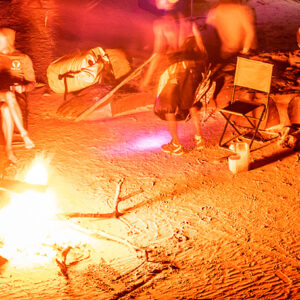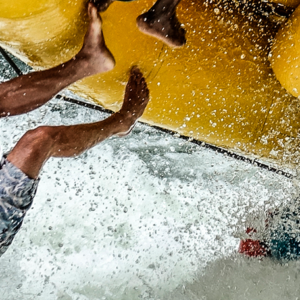




Zambia ON THE MAP
Top Attractions
Nunc cursus libero purus ac congue ar lorem cursus ut sed pulvinar massa idend porta nequetiam
Zambia is know for its vast lakes and wetlands, long and life-giving rivers, breathtaking African sunsets and rich tradition of guiding all contribute to Zambia’s immense appeal as a safari destination.
Surely its most famous landmark, Victoria Falls, which it shares with Zimbabwe, attracts nature lovers and thrill-seekers alike. Visit in March or April, when the falls are in full spate, and you’ll be bowled over by the rainbows, the roar of the cascading water a the dense, drenching clouds of spray.
Livingstone, the closest urban hub to the falls and once Zambia’s colonial capital, has a number of accommodation options, colourful markets and a busy restaurant and nightlife scene. The mighty Zambezi River itself is glassy-smooth above the falls and wild below. It’s perfect for Sundown cruises, canoe safaris and adrenaline activities su white-water rafting and river surfing.
Packed with untamed wilderness and fascinating wildlife, minus the crowds, Zambia is the African bush a most raw and romantic.
The flag of Zambia was hoisted for the first time at midnight on the 23rd October 1964, symbolising patriotism and the nation’s natural resources. An eagle in flight over three stripes of red black and orange on a green background.
Red represents the struggle for freedom, black, the people of Zambia, orange the country’s mineral wealth and green the wildlife and environment. The eagle in flight symbolizes the freedom in Zambia and the ability to rise above national problems.
Key Facts
The Khoisans lived a nomadic life of hunting and gathering from the Stone Age until the 4th century, when the Bantu people started to migrate from the north, bringing with them more advanced technology. They lived in villages and developed farmlands, eventually forcing the Khoisans into this new way of life. By the 11th century, these self-sufficient villages started to trade with other groups. The archeological site of Ingombe Ilede in Siavonga depicts the best example of this time period.
Between the 16th and 18th centuries, modern Zambia was separated into four Iron Age kingdoms; Kazembe-Lunda in the north, Bemba in the northeast, Chewa in the east, and Lozi in the west. These groups had no contact with non-Africans until the 18th century, when Portuguese and Arab traders started to emerge, with the first recorded European visitor being Manuel Caetano Pereira. The explorer Francisco José Maria de Lacerda followed and in 1820, the Portuguese settled at the confluence of the Zambezi River and Luangwa River, which today separate Zambia from Mozambique.
The first Briton to arrive in Zambia was the famous David Livingstone, who started to explore the upper Zambezi River in 1855 and discovered the Mosi-oa-Tunya waterfall, renaming it Victoria Falls and naming the city of Livingstone after himself. With the European settlers came more powerful states; the upper Zambezi’s kingdom of Barotseland in the south and the Luapula’s kingdom of Mwata Kazembe in the north. Barotseland was inhabited by the Lozi people, who called their land Ngulu. In 1820, they were conquered by the Zulu, descendants from South Africa. In 1863, the Lozi took control again, forcing the Zulu into Malawi.
In the 18th century, the British South Africa Company got the mineral rights for the western region of the country, which was known then as North-Western Rhodesia. Copper was the main export thanks to American scout Frederick Russell Burnham. In 1924, Northern Rhodesia was declared a protectorate by the British, with its capital Livingstone. A few years later, the metal industry boomed, with what is now the Copperbelt region supplying 13 percent of the copper in the world. Bad conditions and high taxes led to the famous 1935 strike, during which time 13 mine workers died.
The Federation of Rhodesia and Nyasaland were formed in 1953, which joined Northern Rhodesia, Southern Rhodesia and Nyasaland (now Malawi) in one semi-autonomous region. In 1964, Northern Rhodesia was renamed the Republic of Zambia, having split from Southern Rhodesia (present-day Zimbabwe). Kenneth Kaunda became the first president and ruled for the next decade. During this time, he supported many political movements through the rest of Africa and became close with communist regimes such as the People’s Republic of China and the Soviet Union.
In the 1970’s, the price of copper plummeted, along with the economy. The country received help from international lenders, but the price of the precious metal continued to decline. By 1995, Zambia had one of the highest per capita foreign debts in the world, but recent years have seen the economy stabilize thanks to the removal of Kaunda from office. The 1990’s brought multiparty democracy to the African nature.
Culture
The Bantu people have done a great job of preserving their indigenous culture in everyday Zambian life; in particular, the Tonga people. Arts and crafts can still be seen in the form of baskets, textiles, mats, wood carvings, ivory, and copper. The traditional heritage is most vibrant in ceremonies and music, which is based on drums. The Likumbi Lya Mize in August is the best way to get a taste of Zambian life.
The general height of the land gives Zambia a more pleasant climate than that experienced in most tropical countries. There are three seasons – cool and dry from May to August, hot and dry from September to November, and warm and wet from December to April. Only in the Valleys of the Zambezi and Luangwa is there excessive heat, particularly in October and, in the wet season, a high humidity. In the warm wet season, frequent heavy showers and thunderstorms occur, followed by spells of bright sunshine. Plants grow profusely and rivers and streams fill up almost overnight. During the cool dry season, night frosts may occur in places sheltered from the wind. The countryside dries up gradually and grass fires, fanned by high winds are a feature of this time of the year. In depressions, frost can occur on cloudless nights. Temperatures rise high during the hot, dry season but new leaves appear on the trees before the start of the rains and new grass brightens the countryside. The main growing period of woody vegetation is between August and November
Dry season – Winter
There is little to no rainfall during the entire winter and humidity is very low. Wildlife will congregate around waterholes when other water sources become scarce.
May – This is the end of summer. Temperatures are relatively cool, typically 12°C/52°F in the morning and 25°C/77°F in the afternoon. The nighttime temperatures start to drop. The rain is almost gone.
June, July & August – The average morning temperature is 10°C/50°F. So it is advisable to bring warm winter clothing for the cold, morning game drives in open vehicles. Afternoons will be more pleasant with temperatures around 23°C/73°F. South Luangwa, Lower Zambezi and other parks at lower altitude will be hotter.
September & October – The heat gradually builds, and the first rains bring relief from very dry conditions. Daytime temperatures will be around 29°C/84°F in September and 31°C/88°F in October, which is the hottest month. In the lower-lying parks, temperatures often peak at over 40°C/104°F, and the rising humidity can make it uncomfortably hot.
Wet season – Summer
November – This month is unpredictable, and it starts raining some afternoons. Temperatures average between 18°C/64°F in the morning and 29°C/84°F in the afternoon.
December, January, February & March – These are the wettest months, characterized by torrential downpours in the afternoon. Afternoon temperatures are around 26°C/78°F, and the humidity is high.
– South Luangwa. The best park in Zambia
– Adventure activities in Victoria Falls
– The Bangweulu Wetlands
– Lower Zambezi National Park
– Kafue NP, one of the biggest in the world.
-

Breakfast or Mid Morning cruise ( Lady Livingstone)
$75.00The Zambezi River, above the mighty Victoria Falls is a wide, meandering treasure trove of wildlife and stunning views. Situated between Zambia and Zimbabwe, the Zambezi is a host to a myriad of bird life, wildlife and panoramic vistas. The river is calm and perfectly suited for sedate and relaxing Zambezi River cruises.
Select date(s) -

Royal Livingstone Express – Dinner Steam Safari
$196.00Climb aboard a luxurious steam train and journey to Victoria Falls Bridge where you will enjoy the sunset before delighting in a delicious 5 course meal.
Select date(s) -

White Water Rafting – The Zambezi Experience – 5 nights
$2,532.00Camping is a treat for all outdoor enthusiasts. Our Zambezi River rafting overnight trips are not all about the river. We want our guests to enjoy the entire experience, including the camping within the Batoka Gorge. We like clients to get involved with building camp, helping to prepare food and collecting fire wood. All meals are freshly prepared, local beers and local spirits are included. Feel free to bring your own bottle of your favourite malt.
Zambezi River rafting overnight trips operate in the low water season, usually from August through to the new year. The rains usually arrive mid November and, although we are equipped to run Overnight Rafting trips in the wet season, be aware it could be very wet camping.
We will run overnight trips with a minimum of 4 people any day of the Low Water Season, however we try to facilitate smaller groups of one’s, two’s or three’s by running trips over the weekends, departing Saturday and returning Sunday.
Select date(s) -

White Water Rafting. High Waters – Feb to Jul
$218.00The “High Water” Rafting Season runs approximately from the middle of January to the beginning of August, depending upon the water level / rains each year. Please note that rafting can close around April /May for safety reasons due to water levels being too high. Note! At the end of the rafting trip, rafters are required to hike 200m out of the gorge, this can be challenging in the warmer months in the middle of the day.
Select date(s)




